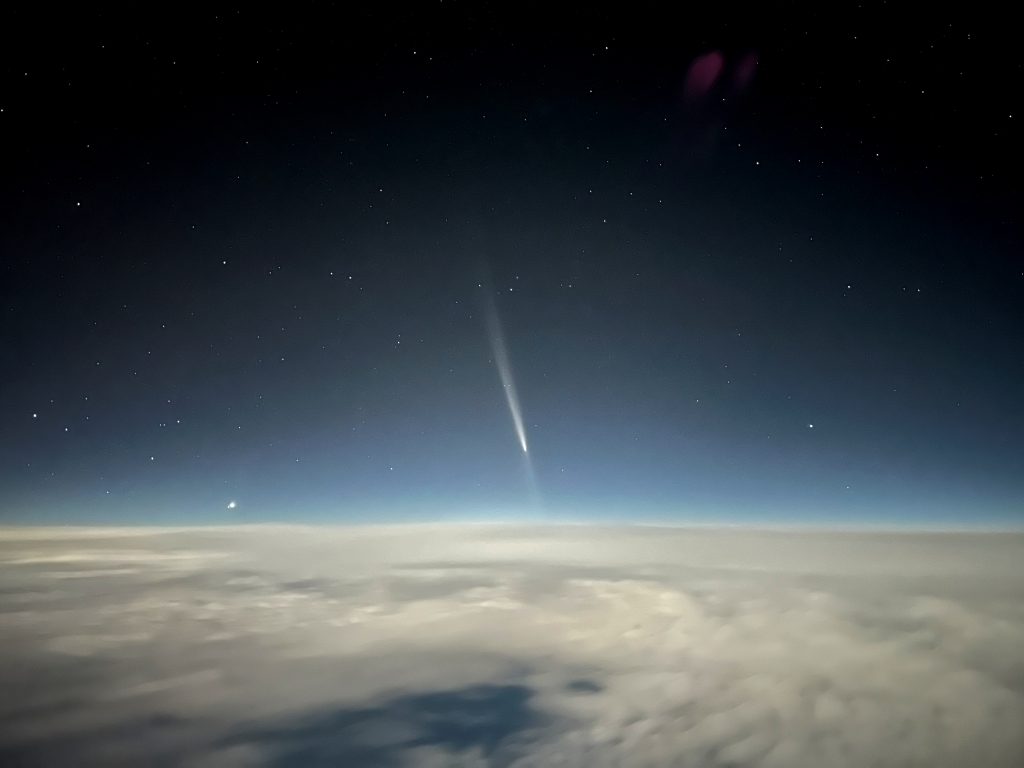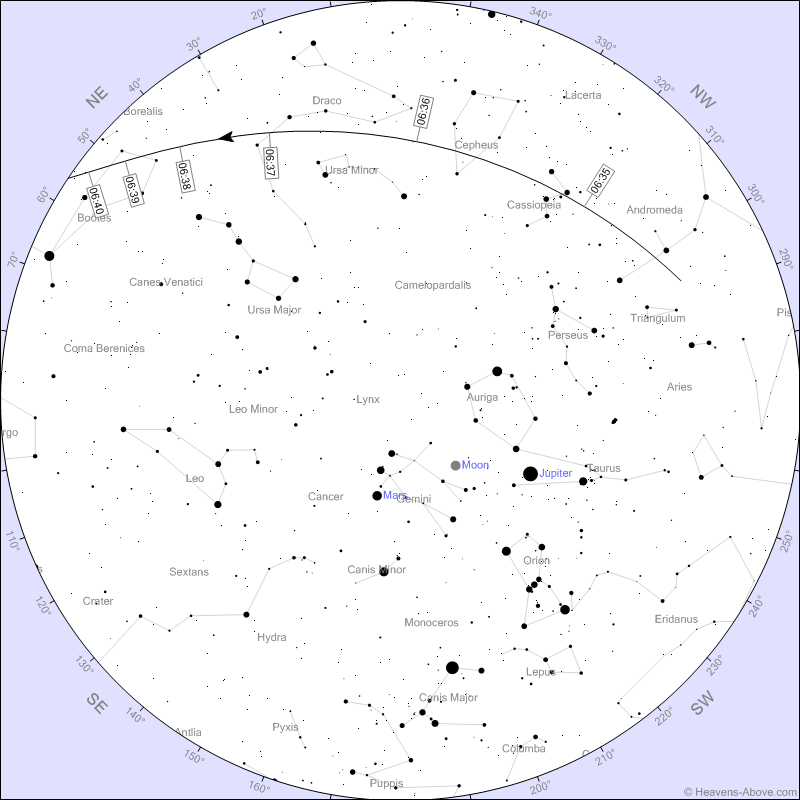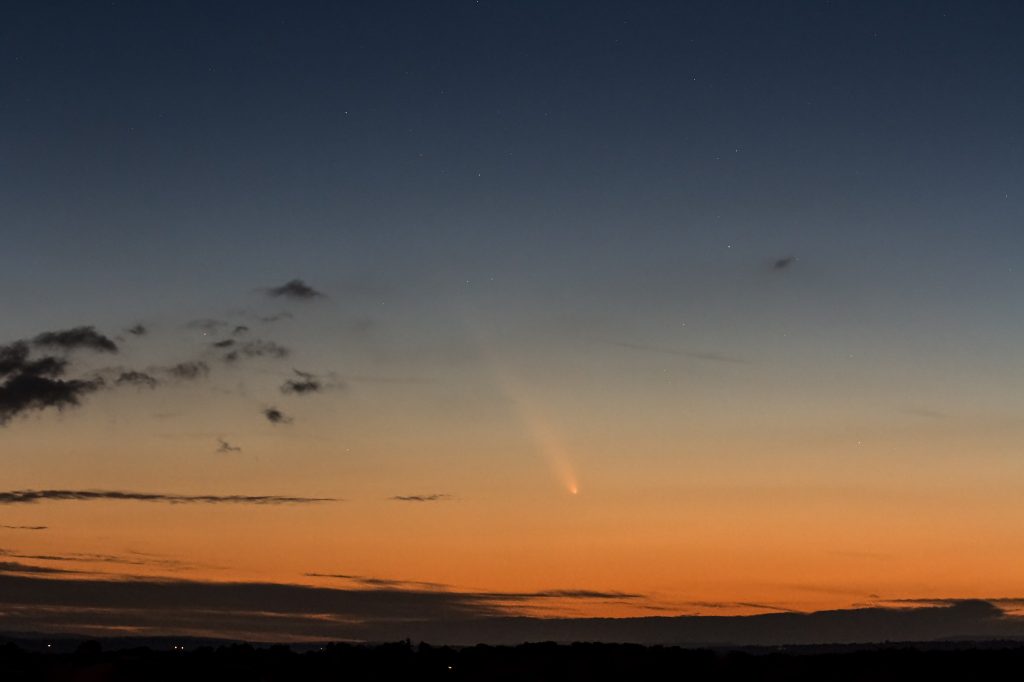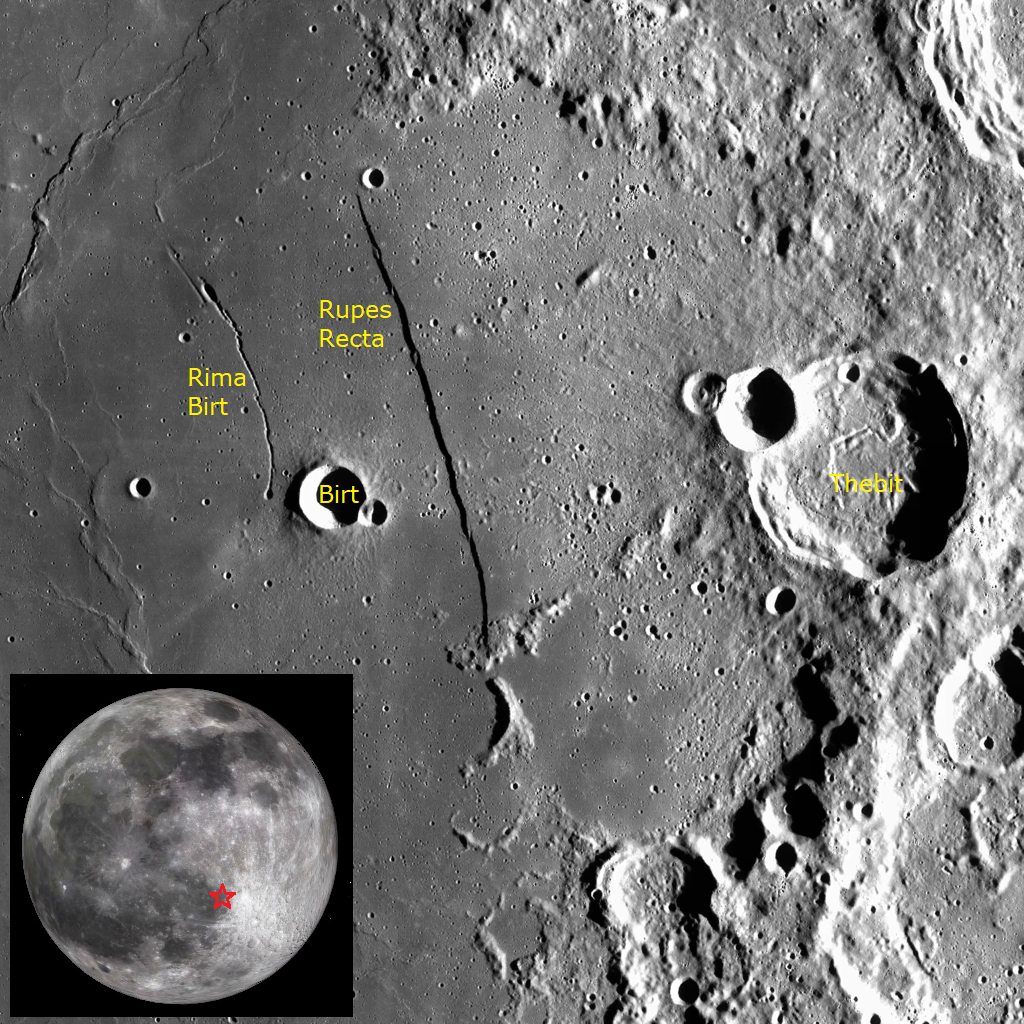The Meteor-Spoiling Moon Moves into Morning, the Night’s Full of Planets, and a Comet Sees a Ghost after Sunset!
My neighbour is a pilot and captured this terrific image of comet C/2023 A3 (Tsuchinshan-ATLAS), complete with anti-tail pointing downward, on October 14 while en route. That’s Venus at lower left, Arcturus a bit higher at right, and the star 110 Virginis directly above the comet. Hello, Late-October Stargazers! Here are your Astronomy Skylights for…
Read more









